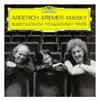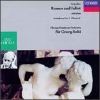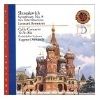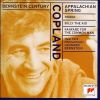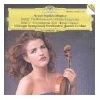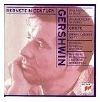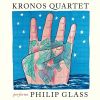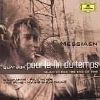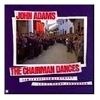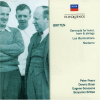|
Top 10 Twentieth Century CDs and MP3s to Start Your Classical Music Collection
The distinctive feature of classical music composed in the twentieth century is that there is no such thing as a "twentieth century style." Composers in different countries, and even within a country, took radically different paths, and the result was a multitude of styles, none of which dominated over the others in the way that, for example, the style of Haydn, Mozart, and Beethoven dominated the last quarter of the eighteenth century.
The most radical break with the past occurred in Germany, where Arnold Schoenberg and his followers rejected the rules that had governed composition for the previous three centuries and began composing "twelve-tone" or "atonal" works. An offshoot of this movement was "serialism," which attempted to create entire compositions out of mathematically precise formulas for pitch, rhythm, and dynamics.
Serialism swept France after World War II, but in the first half of the century French composers looked back to the eighteenth century, and their music was appropriately called "neoclassical." The greatest Neoclassical composer in France (and later in America) was Igor Stravinsky, an import from Russia who also composed fiery ballets in his youth and serial works in his old age.
In Eastern Europe, Béla Bartók collected Hungarian folk tunes and incorporated them in his compositions, while in Russia the Soviet government kept close rein on what music composers were allowed to write. Dmitri Shostakovich and Sergei Prokofiev were the two greatest Soviet composers; Shostakovich's music in particular demonstrates the composer's conflict between personal expression and political expediency.
English composers such as Ralph Vaughan Williams and Benjamin Britten were perhaps the most "mainstream" composers of mid-century, writing in familiar idioms but also influenced by English hymns and English composers of the Renaissance. On the other side of the Atlantic, classical music in the United States reached its maturity in the first part of the century. Aaron Copland integrated American folk tunes with a very traditional European style, while George Gershwin was heavily influenced by ragtime and jazz.
 Back to Eras Index Back to Eras Index
|
|
|
|
Columbia Symphony Orchestra, Igor Stravinsky, conductor
|
  |
|
|
|
In 1913 Igor Stravinsky was an up-and-coming composer on the Paris ballet scene, with two successful works already under his belt. Rite of Spring, his third ballet, takes as its subject an ancient Russian sacrificial ritual. When the "primitive" music and unusual choreography first met with a Parisian audience, it caused a riot and sealed Stravinsky's reputation as a revolutionary composer. Stravinsky's inventive use of rhythm and colorful combinations of orchestral sounds express perfectly the primitive aspects of the sacrifice. The recording with the Columbia Symphony allows us to hear exactly what the composer intended -- for it is Stravinsky himself conducting.
|
|
Similar works: Top 10 Orchestral
|
|
|
|
| Martha Argerich, piano; Gidon Kremer, violin; Mischa Maisky, cello |
  |
|
|
|
Shostakovich wrote his second piano trio in 1944 as a memorial to his close friend Ivan Sollertinsky, who had died the previous winter. The trio begins with the cello playing eerily high notes, then the piano and violin join in below. Working together, the three create a picture of abject mourning. The second movement is a lively scherzo, while the third returns to the mournful attitude with a set of variations over a repeated bass line. The final movement brings the work to a close with several restatements of its own themes in different forms, as well as recollections of the earlier movements. This recording brings together three of today's superstar musicians in an exciting live performance, and also includes an excellent rendition of Tchaikovsky's Piano Trio.
|
|
Similar works: Top 10 Chamber Music
|
|
|
|
| Chicago Symphony Orchestra, Fritz Reiner, conductor |
  |
|
|
|
Béla Bartók was important not only as a composer but also as a musical ethnologist, performer, and educator. He traveled Eastern Europe collecting folk tunes, published the tunes in collections and fused them with Western European traditions to create a highly individual style. He created a set of graded piano lessons called Mikrokosmos that are still in use today. Bartók wrote the Concerto for Orchestra near the end of his life, and it has come to be regarded as his masterpiece. This CD features the great Fritz Reiner performing the Concerto as well as Bartók's other popular orchestral work, the Music for Strings, Percussion, and Celesta. |
|
Similar works: Top 10 Orchestral
|
|
|
|
| Chicago Symphony Orchestra, Sir Georg Solti |
  |
|
|
|
Sergei Prokofiev's "Classical" symphony attempts to answer the question, "What if Haydn had been alive and composing in the early twentieth century?" The result is a charming little piece written in what is essentially the Classical style with some interesting modern twists. The symphony is Prokofiev's most popular, but it is not representative of his later works. This mid-priced CD features the symphony as well as excerpts from Prokofiev's Romeo and Juliet, written twenty years later. |
|
Similar works: Top 10 Symphonies
|
|
|
|
| New York Philharmonic Orchestra, Leonard Bernstein, conductor |
  |
|
|
|
Dmitri Shostakovich was one of the true giants of twentieth-century music. His fifteen symphonies and fifteen string quartets rank with Beethoven's among the greatest contributions to those two genres. The Fifth Symphony was written in 1937 and is subtitled "a Soviet artist's response to just criticism." The Soviet leader Josef Stalin had denounced Shostakovich's popular opera Lady Macbeth of Mtsensk in 1936, and this symphony was Shostakovich's attempt to redeem himself in the eyes of the establishment. And redeem himself he did, by creating his greatest symphony. Especially notable is the triamphant finale with its blaring brass theme. Leonard Bernstein gives the definitive performance on a CD that also includes Shostakovich's equally memorable Cello Concerto. |
|
Similar works: Top 10 Symphonies
|
|
|
|
| New York Philharmonic Orchestra, Leonard Bernstein, conductor |
  |
|
|
|
Aaron Copland's early works were reserved and harmonically complex, but in the 1930s he turned to a simpler style, the apex of which is reached in his 1945 ballet Appalachian Spring. The work incorporates variations on the Shaker hymn "Tis a Gift to be Simple," which is transfigured and absorbed in the music. The ballet's arrangement in an orchestral suite is probably the most popular piece of American music today. Leonard Bernstein's recording is the definitive interpretation of the Appalachian Spring suite -- better even than the recordings made by Copland himself. The CD also includes the popular Fanfare for the Common Man and music from Copland's two other famous ballets, Billy the Kid and Rodeo. |
|
Similar works: Top 10 Orchestral
|
|
|
|
| Anne-Sophie Mutter, violin; Chicago Symphony Orchestra, James Levine, conductor |
  |
|
|
|
Alban Berg is the most famous student of Arnald Schoenberg, the composer who around 1910 stopped composing in the tonal system as it had been used for the previous three centuries. Berg looked more to the past than Schoenberg did, with the result that his music is more accessible to the beginner. In fact, listening to the first movement of this concerto, one would hardly suspect that the piece is written according to Schoenberg's "twelve-tone" system. The concerto, subtitled "to the memory of an angel," was completed only months before Berg's death and serves as the composer's own requiem much in the same way that Mozart's great Mass does. Anne-Sophie Mutter's performance will convince you that twelve-tone music isn't just a jumble of random notes. |
|
Similar works: Top 10 Concertos
|
|
|
|
| Leonard Bernstein, piano; Columbia Symphony Orchestra, New York Philharmonic Orchestra, Leonard Bernstein, conductor |
  |
|
|
|
George Gershwin's music blurs the boundary between the "classical" and "popular" styles. Heavily influenced by jazz, Gershwin wrote primarily for the theater. His Porgy and Bess has been produced both as a musical an an opera. "Rhapsody in Blue" plays a similar role with concert music, combine the styles of American jazz and nineteenth-century German Romanticism. "An American in Paris" is a dizzying whirl of sound that depicts a foreigner's experiences in the artistic capital of the Roaring Twenties. Leonard Bernstein's late-1950s recordings (featuring himself at the piano) have yet to be surpassed. |
|
Similar works: Top 10 Orchestral
|
|
|
|
| Hilary Hahn, violin; Academy of St. Martin-in-the-Fields, Sir Neville Marriner, conductor |
  |
|
|
|
Stravinsky composed this concerto in 1931 to be played by his violinist friend Samuel Dushkin. Each of the four movements begins with the same three-note chord for the violin, and when he first saw the score Dushkin told Stravinsky that this chord couldn't be played. Stravinsky asked Dushkin to reconsider, the violinist learned new fingerings, and the concerto became a smashing success. While it is in Stravinsky's "Neoclassical" style, its structure is inspired by the Baroque concerto grosso; the movements are entitled Tocatta, Arias I and II, and Capriccio. Hilary Hahn, one of today's best young violinists, gives an inspired performance of this notoriously difficult piece. |
|
Similar works: Top 10 Concertos
|
|
|
|
| Kronos Quartet |
  |
|
|
|
Philip Glass is one of the most successful composers in the school of Minimalism, and one of the most popular living composers today. Brought up with a traditional musical training at Juilliard and in Paris, Glass withdrew all of his works and turned to Minimalism after working with the Indian musician Ravi Shankar. His works feature a simple, pleasing harmonic language that develops gradually throughout the piece. These four string quartets are perfect examples of Glass's style and make an ideal introduction to Minimalist music. The Kronos Quartet are today's leading performers of contemporary chamber music, and they give these quartets a splendid reading. |
|
Similar works: Top 10 String Quartets
|
|
|
|
| Paul Meyer, clarinet; Gil Shaham, violin; Jian Wang, cello; Myung-Whung Chung, piano |
  |
|
|
|
Olivier Messiaen took inspiration from sources as diverse as Indian music, fourteenth-century motets, and birdsongs and became the most influential French composer of the mid-twentieth century. Messian's quartet proves once again that necessity is the mother of invention; Messiaen wrote it in 1940 while he was interred at a German POW camp, and the only other musicians besides himself were a clarinettist, a violinist, and a cellist. The result is an unusually scored quartet that is one of the most moving -- and most bleak -- portrayals of human existence. |
|
Similar works: Top 10 Chamber Music
|
|
|
|
| San Francisco Symphony Orchestra, Edo de Waart, conductor |
  |
|
|
|
John Adams is one of the most popular practitioners of minimalism, a style in which composers intentionally limit theiry rhythmic, harmonic, melodic, and/or instrumental vocabularies. This disc contains a compilation of Adams's best orchestral works. "The Chairman Dances" is from the 1987 opera Nixon in China, one of the most successful operas written in the last thirty years. "A Short Ride in a Fast Machine" is a popular favorite, mocking the contemporary obsession with speed. |
|
Similar works: Top 10 Orchestral
|
|
|
|
| Peter Pears, tenor; Dennis Brain, horn; New Symphony Orchestra, Sir Eugene Goossens, conductor |
  |
|
|
|
Britten wrote this serenade in 1943 during the darkest days of World War II, and its text consists of six poems by British authors on the subject of death. He wrote it as a vehicle for the great horn player Dennis Brain, who commissioned the work, and for the legendary tenor Peter Pears (pronounced "Peers"), who was Britten's lifelong partner. This recording, made in 1953, features both Pears and Brain in a moving performance. |
|
Similar works: Top 10 Song
|
|
|
|
|

















